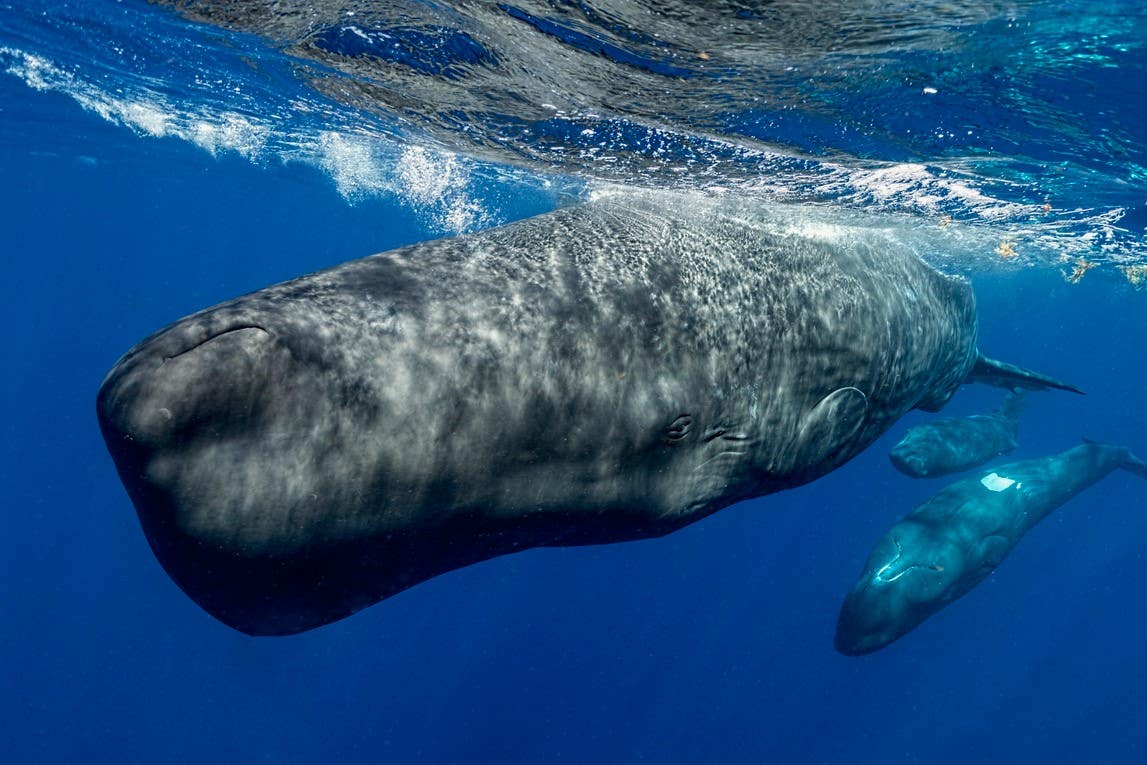Sperm whales ‘modulate clicks in similar way to human speech’
Scientists have developed a ‘sperm whale phonetic alphabet’ to understand more about how whales communicate.

Your support helps us to tell the story
From reproductive rights to climate change to Big Tech, The Independent is on the ground when the story is developing. Whether it's investigating the financials of Elon Musk's pro-Trump PAC or producing our latest documentary, 'The A Word', which shines a light on the American women fighting for reproductive rights, we know how important it is to parse out the facts from the messaging.
At such a critical moment in US history, we need reporters on the ground. Your donation allows us to keep sending journalists to speak to both sides of the story.
The Independent is trusted by Americans across the entire political spectrum. And unlike many other quality news outlets, we choose not to lock Americans out of our reporting and analysis with paywalls. We believe quality journalism should be available to everyone, paid for by those who can afford it.
Your support makes all the difference.Sperm whales can modulate their clicks in a way that is similar to how humans speak, according to scientists.
These mammals are known to be sociable and are often spotted in groups – known as pods – of 15 to 20.
They communicate with each other by producing a series of rhythmic clicks, known as codas.
The researchers said that while communication plays a vital role in complex social behaviours in humans, not much is known about the vocalisations of sperm whales.
Previous research has shown these creatures use clicks to communicate their identity and that each clan has their own unique accent.
The study, published in the journal Nature Communications, found sperm whale communication to be more complex than previously thought, offering “steps towards understanding how sperm whales transmit meaning”.
Pratyusha Sharma, a PhD student at the Massachusetts Institute of Technology who led the study, said sperm whale calls have “contextual variation”, where some features of their calls only become evident in the wider context – much like tone in human speech.
She said just like humans combine sounds to form words, known as combinatoriality, sperm whales do the same by modulating their clicks using rhythm, tempo, rubato (variation in duration), and extra clicks (known as ornaments) to form codas, which are then sequenced together in exchanges.
She said: “These extra clicks, we call ornaments, are suffixed on top of different codas.
“These occur more towards the beginning and end of turns in an exchange, behaving like discourse markers.”
Sperm whales are considered to be one of the loudest animals in the ocean, which their clicks reaching up to around 230 decibels (dB) underwater – which is much louder than a jet engine (around 150 dB).
These powerful sounds enable the whales to communicate across thousands of miles.
For the study, the team looked at data from The Dominica Sperm Whale Project, which contains the largest storehouse of data on these animals.
They analysed recordings from about 60 different whales from the Eastern Caribbean sperm whale clan, which are often found near the shores of Dominica, St Vincent and the Grenadines, and Guadeloupe.
Sizable combinatorial vocalisation systems are exceedingly rare in nature; however, their use by sperm whales shows that they are not uniquely human
The researchers then used this information to create what they call a “sperm whale phonetic alphabet” of click combinations.
The authors wrote: “In a dataset of 8,719 codas from the sperm whales of the Eastern Caribbean clan, this ‘sperm whale phonetic alphabet’ makes it possible to systematically explain observed variability in coda structure.
“While the communicative function of many codas remains an open question, our results show that the sperm whale communication system is, in principle, capable of representing a large space of possible meanings, using similar mechanisms to those employed by human sound production and representation systems (eg, speech, text, Morse code, and musical notation).”
They added: “Sizable combinatorial vocalisation systems are exceedingly rare in nature; however, their use by sperm whales shows that they are not uniquely human, and can arise from dramatically different physiological, ecological, and social pressures.”